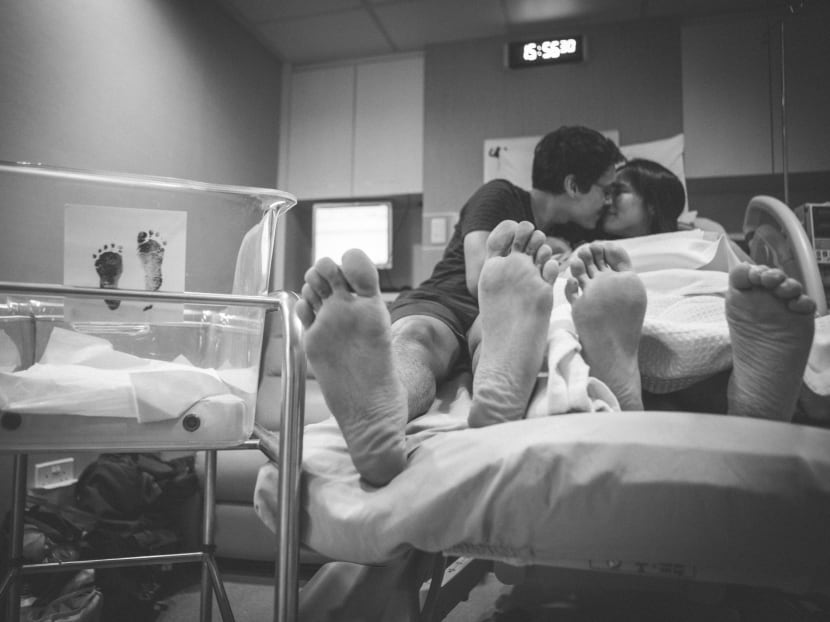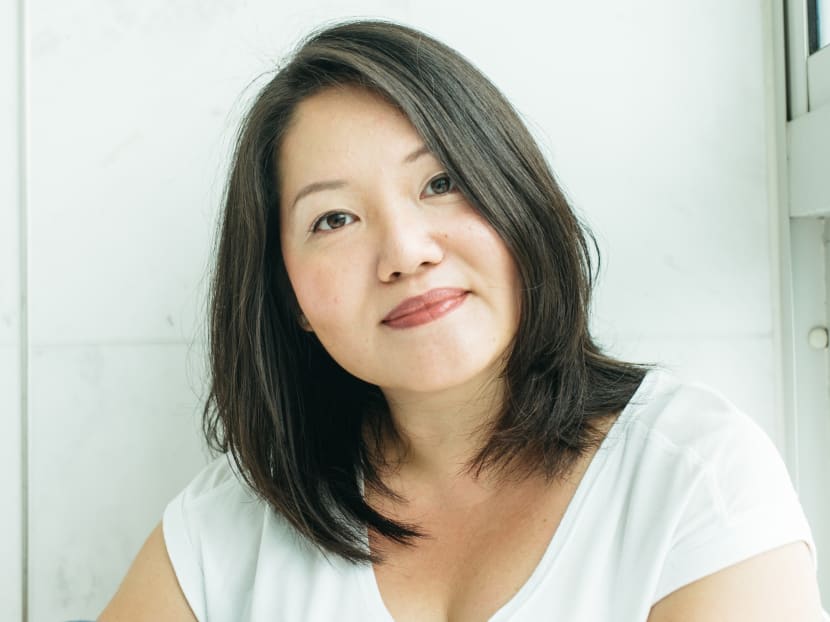Photographing babies’ deaths and seeing life
I have been a volunteer photographer with the non-profit organisation, Now I Lay Me Down To Sleep, for over a decade, helping parents photograph their babies who die at birth. I have done 13 such photo shoots in Singapore.

The author took this photo of a couple holding their stillborn baby in a Singapore hospital in 2019.
Sometimes I get an unknown number calling my phone. The voice at the end of the line is stoic.
“Hi, I’m very sorry to disturb you. But my baby has just died, and I was wondering if it would be alright that you come and help photograph him.”
I have been a volunteer photographer with the organisation, Now I Lay Me Down To Sleep, for more than a decade.
We are a group of professional photographers, located worldwide, who help parents photograph their babies who die at birth.
Many would deem the work that we do macabre, but I knew I wanted to volunteer for the organisation the minute I found out about it in 2008.
It was formed in 2005 as a non-profit organisation, and inspired by one of the co-founders, Cheryl Haggard, having professional photographs taken of her baby son when he passed on.
The organisation exists to give bereaved families the gift of professional heirloom portraits of their babies to remember them by.
As a photographer, I subscribe to the practice of capturing the moment, saving memories to savour again.
When adults pass on, we often have a lifetime of photos of and with them; but with babies, we may only have those few hours of pictures, if at all.
I, too, had a sister who passed on a few days after birth. This was in the 1980s. Photography was not the trend du jour, as it is now with our easy access to smartphone cameras.
We did have a photograph taken with the baby, quite possibly by someone from the hospital, using a disposable film camera.
The photo was a quick snap of our grim faces, with my dad carrying baby Jasmine. We hardly looked at the picture, nor have we talked about the baby since.
Society has conditioned us to celebrate a life lived when an adult dies.
But we hush a baby’s death like it is something to hide — for some, the experience still carries with it the themes of stigma, shame, and guilt.
Yet a life — any life — deserves to be celebrated and treasured.
Around the world, more parents are choosing to have professional photos taken of their stillborn or dying babies, facilitating the grieving process by allowing themselves the time and space to honour their babies. In those painful moments of death, we celebrate life.
To date, I have done 13 such photo shoots in Singapore.
In the earlier years, they were few and far between and even no shoots in some years. In recent years, as awareness of what I do grows, I get an average of two or three assignments a year.
Through my 12 years of working with bereaved parents, I realised I was providing different forms of grief support.
We are helping the babies be seen, however brief their existence may have been.
By providing these heirloom photographs for the parents, we are helping them preserve their child’s memory.
The black and white images serve as a timeless, tangible reminder that their child was here, and is remembered, loved and missed every day.

The author (pictured) says she stays in touch with some parents who lost their babies. Photo courtesy of Joan Leong
HOLDING SPACE AND CELEBRATING MILESTONES
Parents appreciate that I am there as a photographer — without emotional baggage, simply listening and guiding them through this confusing time.
One common thread from parents is that they do not have the capacity to look after the emotions of their family and friends.
While most of us think we are supporting grieving parents by sharing our feelings (thereby showing that we are as sad as they are for their loss), our good intentions may actually add more stress on the parents as they feel they have to tend to our feelings instead of processing their own.
At the same time, photographers are also humans with emotions and I remember being emotionally affected after one of my first shoots.
I did not realise what was happening at the time, but I was depressed for almost a week.
Over the years, I have learnt to give myself space and time to grieve for the loss of a life and for the parents’ loss. It does not get easier, but I have become better equipped psychologically to process the emotions.
If the parents allow me to, I try to stay in touch with them. I want to celebrate with them the other milestones that they experience after one of their most difficult times.
Some share their joy in conceiving again, which will either find me traipsing down to the hospital to photograph the newborn or organising a family photoshoot at a later date.
The photograph has always been viewed as a tool that captures a moment in time. Memories, keepsakes, pictures of our travels, birthdays, graduations, special events.
In this day and age, billions of people around the world are producing photographs every second — sometimes, not realising the importance of memories they are capturing.
In this work I do, I have come to recognise how important and powerful a single image can be, in giving the gift of eternal memories of a loved one whose time was heartbreakingly short-lived.
ABOUT THE AUTHOR:
Joan Leong is a media professional. This piece first appeared in The Birthday Book (2020), a collection of 55 essays on the theme “Seeing Clearly”. TODAY will be publishing other essays from the book.






